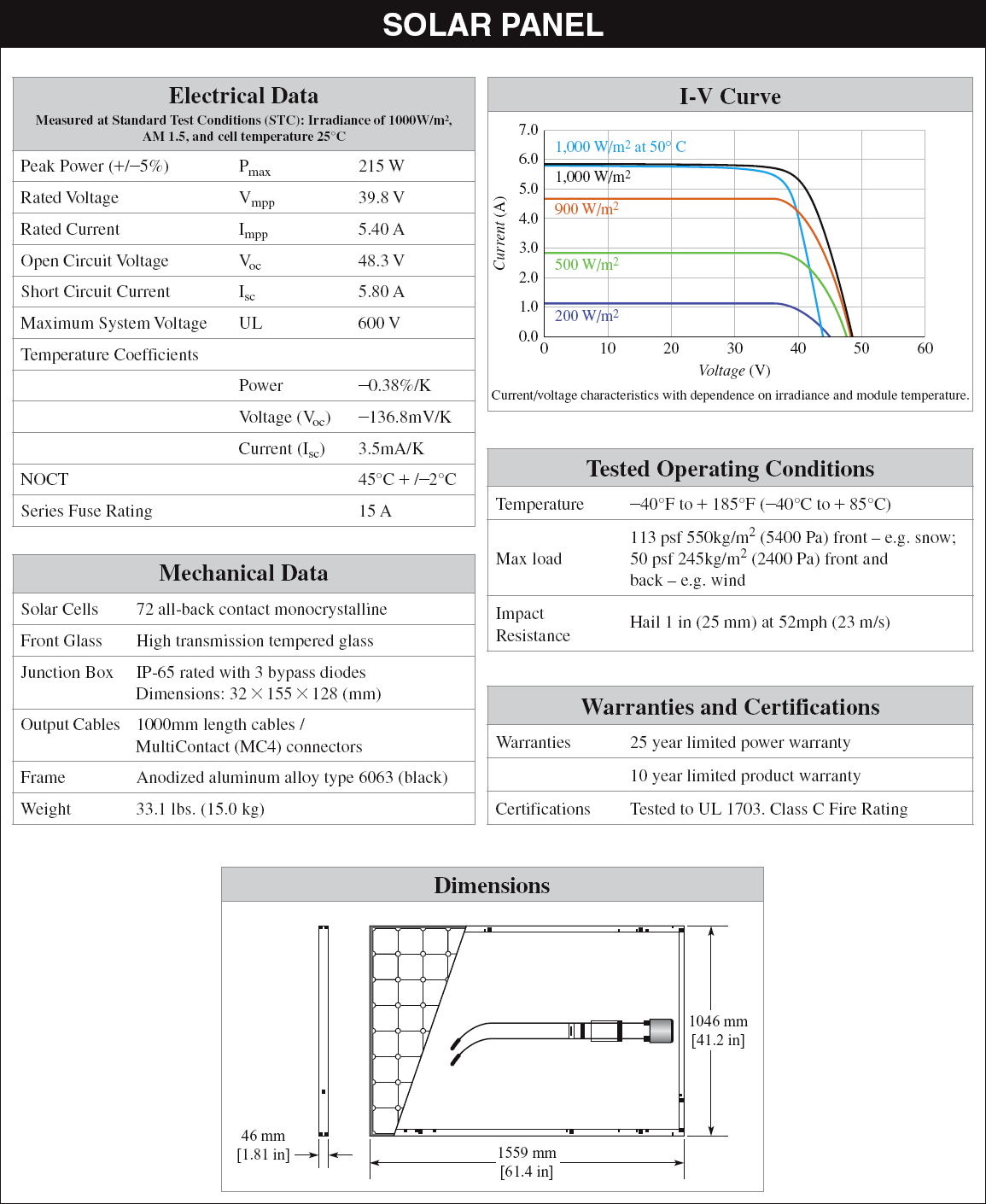The most important solar panel specifications include the short-circuit current, the open-circuit voltage, the output voltage, current, and rated power at 1,000 W/m2 solar radiation, all measured under STC.
Solar modules must also meet certain mechanical specifications to withstand wind, rain, and other weather conditions. An example of a solar module datasheet composed of wafer-type PV cells is shown in Figure 1.
Notice that the data sheet is divided into several sections: electrical data, mechanical data, I-V curve, tested operating conditions, warranties and certifications, and mechanical dimensions.
Although data sheets vary from one manufacturer to another, most have this type of information. This particular datasheet uses the term panel instead of module. You will find these terms are sometimes used interchangeably. A CdTe thin-film solar panel data sheet is shown in Figure 2.

Figure 1: Typical Solar Module Datasheet

Figure 2: CdTe Thin-Film Module Data Sheet
Review Questions
- According to the data sheet in Figure 1, what is the voltage at the maximum power point?
- What is meant by the term normal operating cell temperature (NOCT)?
- How many modules can be connected in parallel without exceeding the maximum system voltage?
- According to the data sheet in Figure 1, what is the approximate power output at an irradiance of 200 W/m2?
- What is the approximate decrease in output voltage for the module in Figure 2 if the temperature increases from 25°C to 50°C
Answers
- 39.8 V
- The NOCT is 45°C ± 2°C. There is no limit.
- Reading the graph, I = 1.2 A and V = 37 V. The maximum power is therefore approximately 44 W.
- The coefficient is −0.25%/°C for T > 25°C. The output drops −0.25%/°C × 25°C = −6.25%
Key Takeaways of Solar Panel Specifications
Solar panel specifications include factors such as power output, efficiency, voltage, current, and temperature coefficient, which determine the performance and suitability of the panel for specific applications.
Key specifications to consider when evaluating solar panels are the wattage or power rating, efficiency percentage, operating voltage, current output, and the temperature coefficient that indicates how the panel’s performance is affected by temperature changes.
Additionally, other specifications like the dimensions, weight, durability, warranty, and certifications should be taken into account to ensure the solar panel meets the desired requirements and standards for installation.
Understanding and comparing solar panel specifications helps consumers and professionals make informed decisions when selecting the most appropriate solar panels for their energy needs, taking into consideration factors such as available space, budget, and desired system performance.